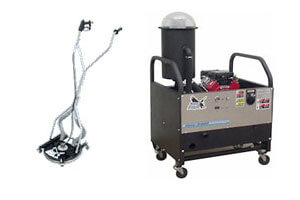Gray Water for a Cleaner Earth
There are two main waste water recovery systems although they each have their own features for each process:
- A system which abides by environmental laws in order to collect, contain, and transport gray water for safe disposal
- A closed system which collects, recycle, and contains the water in order to make it safe enough for reuse and discharge, also abiding by environmental laws. This type of system is more efficient in areas where water is scarce and people need to give extra effort for water conservation.

For those who want to learn which type complements your power washing business, you need to understand the focus of the industry. One of the first things you should do is to evaluate your site and the most common locations where you work. The following factors should be taken into consideration to help you learn which type of water recycle systems and recovery are best for you:
- What kinds of surfaces do you work on the most? Are they impermeable, do they contain cracks, and do they require repair?
- If you work with non-impermeable surfaces, determine the kind of surface level and types. Do they require the use of a collection mat?
- Do they contain sloped areas which may cause the gray water to run? If yes, you may need o use a dike to collect the gray water.
- Are the low points designed with storm drains? If yes, these should be blocked to prevent gray water from running into any bodies of water.
- When you are determining the toxicity of materials exposed to the water, its collection and disposal, never overlook the safety of your workers because this is also a pressing issue.
Over the years, there has been an increased development for more methods for blocking storm drains. Among these, the most common types are the use of water or sand-filled bladders and screw-down covers. Water containment options are also more affordable and require minimal maintenance. But prior to making any purchases you should also evaluate the most common job site needs and also work to adhere to the municipal and Environmental Protection Agency regulations so you come up with solutions which are not only good for your business but also safe for employees and beneficial to the environment. Some things to consider in wastewater equipment:
- Do your research and look for products and systems whose designs are simple and easy to use.
- Make sure that the products can work well with your power washing equipment
- Only buy from reputable companies who are known for manufacturing industrial-grade equipment to ensure you are getting the best value for your money as well as training and customer support for your purchase.
- Make sure that the products meet or exceed standards of the Pressure Washing EPA Compliance
- Sump pumps can leave 1/2 to 1/4 inches of standing water
- Although vacuum pumps are most efficient, look for products whose input capacity can match the water output by checking the gpm capacity.
- The diameter and length of your hose may have an impact on the suction power and input capacity
- Make sure that your micro-filters are easy to clean and accessible
- Any oil absorbents and oil/water separators you use should be easy to clean
- Take note that the nozzles and hose used for gray water recovery can contain traces of toxins which can enter the system. To prevent equipment contamination you need to separate the equipments used in water recycling
- If you are cleaning up flammable liquids, there is a risk of a fire even if these are diluted in water so you need to take additional precautions
- Always read your instruction manuals and make sure all your employees know it by heart, as well as the limitations of all equipment.
The publisher of these pages is in no way responsible for any damage caused to you, your pressure washer, anyone else, your property, or anyone else's property by trying to implement or by successfully implementing the above-mentioned performance and services.
Read Related Articles:
- Saving Our Resources with the Water Oil Separators
Essential equipment for recycling water and other solids.
- Clean Water for the Community – Waste Water Treatment Systems
Help and protect our environment by using waste water treatment systems.


